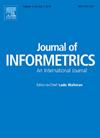小而重要的变化:颠覆性创新的艺术
IF 3.5
2区 管理学
Q2 COMPUTER SCIENCE, INTERDISCIPLINARY APPLICATIONS
引用次数: 0
摘要
在不断发展的技术领域,产品创新是通过用新的进步技术取代过时的技术或通过技术重组而产生的。本研究采用基因框架表示产品,提取染色体数据,利用系统发育方法构建汽车产品综合影响网络。通过引入“产品颠覆指数”——受D指数的启发——到产品相似空间,我们衡量产品的颠覆性。我们关于汽车产品颠覆性下降的发现与之前对专利和出版物的研究中观察到的趋势一致,产品颠覆指数通过两个引人注目的案例研究得到进一步验证,其可信度得到加强。我们的统计分析显示,颠覆性创新往往来自微小但关键的修改。继承前人的优势技术,对关键技术稍加调整,比大规模的技术变革更能有效地提高产品的颠覆性。事实上,在巨人的肩膀上迈出的一小步可能会导致颠覆性创新的重大突破。本文章由计算机程序翻译,如有差异,请以英文原文为准。
Small but not least changes: The art of creating disruptive innovations
In the ever-evolving landscape of technology, product innovation arises through the replacement of outdated technologies with novel advancements or through technological recombination. This study employs a genetic framework to represent products, extracting chromosomal data to construct a comprehensive product influence network of automobiles using a phylogenetic approach. By introducing the “Product Disruption Index” —inspired by the D index—into the product similarity space, we measure a product’s disruptiveness. Our findings on the decline in disruptiveness of automotive products align with trends observed in previous studies on patents and publications, and the Product Disruption Index is further validated and its credibility reinforced through two compelling case studies. Our statistical analysis reveals that disruptive innovations often arise from minor yet pivotal modifications. Furthermore, inheriting superior technologies from predecessors and making slight adjustments to key technologies are more effective in enhancing a product’s disruptiveness than extensive technological changes. Indeed, small steps taken on the shoulders of giants can lead to significant breakthroughs in disruptive innovation.
求助全文
通过发布文献求助,成功后即可免费获取论文全文。
去求助
来源期刊

Journal of Informetrics
Social Sciences-Library and Information Sciences
CiteScore
6.40
自引率
16.20%
发文量
95
期刊介绍:
Journal of Informetrics (JOI) publishes rigorous high-quality research on quantitative aspects of information science. The main focus of the journal is on topics in bibliometrics, scientometrics, webometrics, patentometrics, altmetrics and research evaluation. Contributions studying informetric problems using methods from other quantitative fields, such as mathematics, statistics, computer science, economics and econometrics, and network science, are especially encouraged. JOI publishes both theoretical and empirical work. In general, case studies, for instance a bibliometric analysis focusing on a specific research field or a specific country, are not considered suitable for publication in JOI, unless they contain innovative methodological elements.
 求助内容:
求助内容: 应助结果提醒方式:
应助结果提醒方式:


